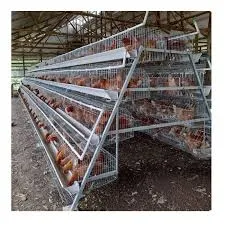Affordable Small Pellet Feed Production Equipment for Livestock and Poultry Nutrition Solutions
Aug . 12, 2024 01:20 Back to list
Affordable Small Pellet Feed Production Equipment for Livestock and Poultry Nutrition Solutions
Small Pellet Feed Making Machine A Solution for Sustainable Animal Feed Production
In recent years, the demand for sustainable and efficient animal feed has surged due to the global increase in livestock farming. As a result, small pellet feed making machines have emerged as essential equipment for farmers and small-scale feed producers. These machines not only facilitate the production of high-quality feed pellets but also contribute to the overall sustainability of animal husbandry practices.
The Importance of Pellet Feed
Pellet feed is a processed form of animal feed that offers numerous advantages over traditional loose feed. The pelleting process involves compressing the feed materials into small, cylindrical shapes, making it easier for animals to consume. This form of feed leads to reductions in feed wastage, enhances nutrient absorption, and improves the overall health of livestock. Furthermore, pelleted feed promotes better digestion, which can enhance growth rates and feed conversion efficiency in animals.
Features of Small Pellet Feed Making Machines
Small pellet feed making machines are designed for compact operations, making them ideal for small farms or feed production businesses. These machines are typically equipped with features that enhance their efficiency and usability
1. Versatile Production Most small pellet feed making machines can process various raw materials, including grains, legumes, and even forages. This versatility allows producers to create customized feed formulas tailored to specific livestock requirements, whether for poultry, cattle, pigs, or fish.
2. Energy Efficiency Modern pellet mills are engineered to be energy-efficient, minimizing operational costs. Many machines are capable of running on different power sources, including electricity, diesel, or even biomass, making them suitable for diverse settings.
3. User-Friendly Design Small pellet feed machines often come with intuitive controls and straightforward assembly, making them accessible for users without extensive technical knowledge. Additionally, many manufacturers provide training and support to ensure smooth operation.
small pellet feed making machine

4. Quality Control The pelleting process typically involves the application of heat and pressure, which helps to eliminate harmful bacteria and pathogens in the feed. This increases the safety and quality of the final product, ensuring the health of the animals consuming it.
Benefits of Using Small Pellet Feed Making Machines
The adoption of small pellet feed making machines offers several key benefits for farmers and feed producers
- Cost-Effective Production By producing their own feed, farmers can significantly reduce costs associated with purchasing commercially-produced feed. This can lead to better profit margins and improved financial sustainability.
- Waste Reduction Small pellet feed machines allow farmers to utilize agricultural by-products and leftover materials from their operations. This not only minimizes waste but also promotes a circular economy within farming practices.
- Customization of Nutritional Content Farmers can create tailored feed formulations to meet the specific needs of their livestock. This customization can lead to healthier animals and better productivity in terms of growth and reproduction.
- Improved Livestock Health Quality pelleted feed contributes to better nutrition, resulting in healthier animals and potentially higher yields in meat, milk, or egg production.
Conclusion
The increasing focus on sustainable agriculture calls for innovative solutions in animal feed production. Small pellet feed making machines represent a valuable investment for farmers looking to enhance their operations. By providing a means to produce high-quality, customized feed in a cost-effective manner, these machines play a crucial role in improving livestock health and productivity while contributing to environmental sustainability. As the industry continues to progress, the importance of such technologies in promoting efficient and responsible farming practices cannot be overstated.
-
Automatic Feeding Line System-Pan Feeder Nipple Drinker|Anping County Yize Metal Products Co., Ltd.
NewsJul.29,2025
-
Hot Sale 24 & 18 Door Rabbit Cages - Premium Breeding Solutions
NewsJul.25,2025
-
Automatic Feeding Line System Pan Feeder Nipple Drinker - Anping County Yize Metal Products Co., Ltd.
NewsJul.21,2025
-
Automatic Feeding Line System Pan Feeder Nipple Drinker - Anping County Yize Metal Products Co., Ltd.
NewsJul.21,2025
-
Automatic Feeding Line System - Anping Yize | Precision & Nipple
NewsJul.21,2025
-
Automatic Feeding Line System - Anping Yize | Precision & Nipple
NewsJul.21,2025






